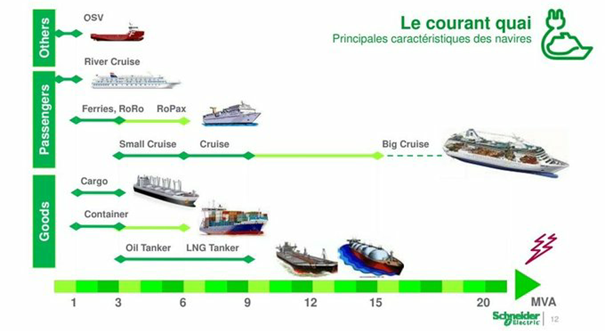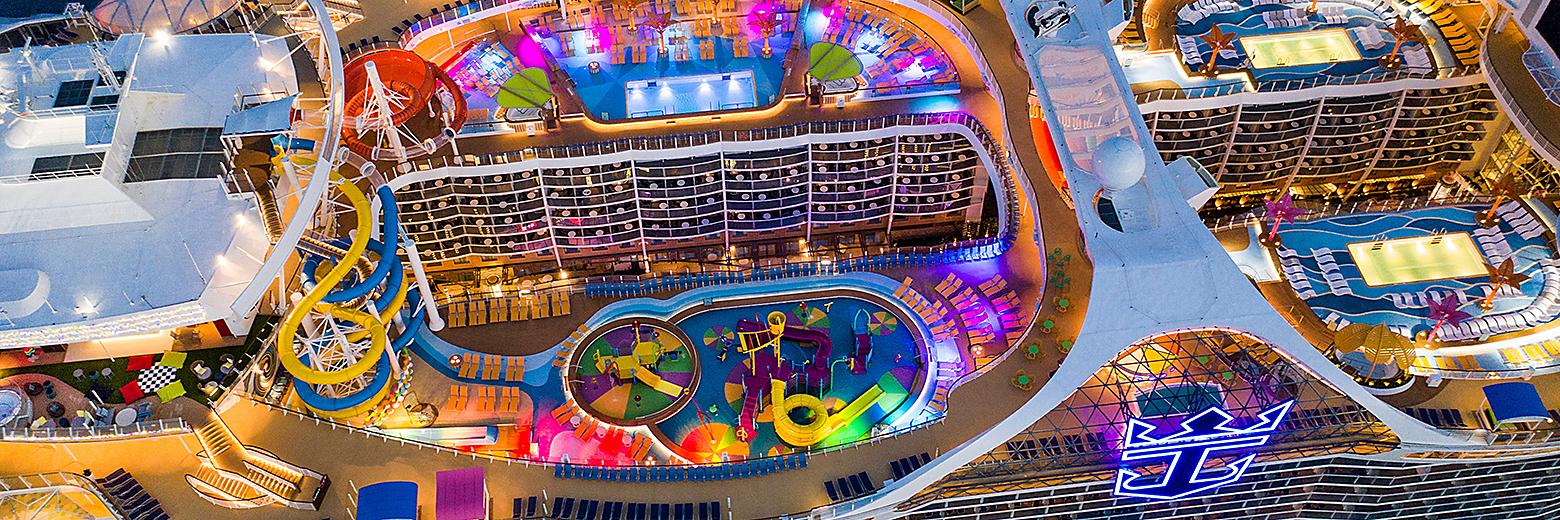Context
In Marseille, the electrification of the platforms has been requested by citizens for years, and the project has been postponed many times.
The Grand Port Maritime de Marseille (GPMM) and certain public authorities are timidly tackling the issue and taking the opportunity to give themselves a green image by not hesitating to spread disinformation… and thus perpetuate the cruise industry.
Under pressure from these players, the city of Marseille declared its contribution of €10 million to the region’s “Escales Zero Fumée” plan.
This article explains why this plan as it is designed today is not acceptable to us.
We reaffirm that it is urgent to act by electrifying the form 10, ferry and even freight platforms and hope that the town hall will be able to direct its funding towards these priority projects, but not for cruise ships.
This article aims to explain our positioning through a point on electrification: what is it for? where are we? what are the prospects? – before presenting the political aspects: who finances? isn’t the region trying to smoke us out in a new way?
Platform electrification, what is it for?
Ships at dock need electricity to operate their equipment (air conditioning, heating, fridge, lighting, etc.). The power required for a large cruise ship is of the order of 10 MW, which represents 1/100th of a nuclear reactor for just one ship.
This electricity is currently produced by generators which run on diesel (at the dock only) or fuel oil (at sea) and continue to emit black smoke during their time spent at the dock. This phenomenon is well known to residents of the northern districts of Marseille who see black soot covering their exteriors and notice health problems. In Marseille, according to Atmosud, 40% of air pollution with nitrogen oxide (NOx), a precursor of ozone, is attributable to maritime traffic, 20% of which is due to cruises [1].
The electrical connection of ships at dock with electricity produced on land therefore aims to reduce this air pollution when ships are in port.
In Marseille, in Toulon where are we?
In Marseille, the electrification of the quays is progressing timidly: today 4 berths are equipped and 6 ferries traveling to Corsica have the possibility of being connected (3 from the Méridionale since 2017 and 3 from Corsica Linea since 2020).
In Toulon, work is underway to offer connection possibilities to all the quays located in the city center for three ferries or two ferries and a cruise ship (power of 15 MW [2]).
The outlook: electrification that will never be complete in Marseille for cruise ships
The Atmosphere Protection Plan (PPA) [3] finalized following a public inquiry in February 2022 provides the latest information on the electrification of platforms.
PPAs are documents drawn up by the State at departmental level. These plans have performance obligations on air quality, therefore:
- they cannot be satisfied with vague measures, without consistency, financing or deadline,
- if they prove insufficiently ambitious and effective, the State is held responsible. This is how, following an appeal filed by associations, the State was sentenced in July 2020 by the Council of State to a fine of 20 million euros per year, renewable every 6 months, due to of the inadequacy of these plans. [4].
Measure no. 1 of the new PPA 13 concerns the electrification of platforms and aims for the following objectives (available in the evaluation document produced by Atmosud [5]):
- ferries to Corsica: all 800 annual stops electrified by 2025;
- international ferries: 200 of the 450 annual calls electrified by 2025;
- cruise ships: 200 of the 500 annual calls electrified by 2025;
- ship repair (the “form 10”: immense dry dock of 450,000 m3 of water, 3rd largest in the world): objectives “to be defined by the Grand Port Maritime de Marseille (GPMM)”.
It is therefore clear that there are currently no plans to electrify all of the GPMM’s stops.
In the PPA, it is the number of stopovers that is mentioned rather than energy consumption. However, a cruise liner of more than 300 meters and more than 5,000 passengers, which stays at the dock for a few days with its entire life on board, consumes considerably more electricity than a ferry to Corsica between two loads of passengers: the 300 cruise stops which are not taken into account in this plan weigh heavily in terms of air pollution.

Given the power requirements, the feasibility of electrifying 200 stopovers (out of 500) on cruise ships already raises questions, and the costs would be very significant. Electrification is in fact more suited to ferries than to cruise ships, whose energy needs are much higher. The GPMM also specifies to the French Press Agency (AFP) that “two [cruise] boats will be able to connect simultaneously. This is the maximum that we can do in terms of power” [6]
For the rest, the GPMM relies on Liquefied Natural Gas (LNG), a fossil energy which certainly makes it possible to largely limit air pollution, but only slightly reduces greenhouse gas emissions and causes serious environmental problems. (see argument [7]). This energy, which impacts the climate through its greenhouse gas emissions, has also been excluded from measures aimed at “greening” ports in France’s recovery plan [8]
No shore connection solution will therefore emerge for all cruise ships. In addition to this air quality aspect, given the heavy impacts of this industry on the climate, the sea, the social aspect and the meager economic benefits generated, it does not seem desirable to us to commit significant public funds which could subsequently justify the perpetuation of this activity.
Given that there is a physical limit on the power that can be installed, we might as well redirect these electrification investments towards more useful areas which have long been requested by local residents: ferries, construction sites. naval, and possibly freight.
Finally, regarding other types of boats:
- no project is planned for the ship repair yard in form 10, despite the fed up of local residents who are asking for it through a petition signed to date by more than 2000 local residents,
freight ships are not affected by this plan.
Who finances? It’s us !
The cost of these measures concerns:
- equipment for supplying electricity at the dock,
- the equipment of the ships themselves,
- the cost of electricity which remains higher than that of using diesel.
1. Equipment for the supply of electricity
Everywhere in France, the cost of electrifying docks is borne by public money, which, in the case of cruises, seems contrary to the “polluter pays” principle according to which shipowners who earn money thanks to cruises should cover the costs generated by their pollution.
Thus, the dock electrification project in Toulon cost €20 million of public money, financed by:
- TPM metropolis: €7 million
- South Region: €2.3 million
- Department: €3.6 million
- Status: €3.1 million
- Europe: €4.3 million
In the PPA, it is indicated that in Marseille the connection of the electrical network for sufficient power at the quayside is carried out by ENEDIS and the creation of quayside stations/terminals for ship connections is carried out by the GPMM, which voted on a budget of €35 million for this project (to be financed by public aid).
2. Ship equipment
The electrification of the quays is not enough, shipowners must also equip their ships (which is not yet the case in Toulon). The cost per ship is around €1M.
The PACA region intervenes here too and goes further than other regions to help shipowners equip their ships through the Zero Smoke Stopovers system [3], [6], making the community once again responsible for pollution of private vessels.
3. Cost of electricity
The PPA indicates that “the Grand Port Maritime de Marseille offers a preferential electricity supply rate. This supply is also subject to favorable taxation (reduced rate of the Internal Tax on Final Electricity Consumption TICFE). »
The State is therefore proud to announce to us that cruise ships, coming to pollute us by paying almost no taxes, will also benefit from electricity at a preferential rate compared to citizens, and if that were not enough, in plus, advantageous taxation on it…
Finally, for ships that cannot be electrified, the region plans to develop an LNG sector, which it will still finance with public money to the tune of €40 million [9]…
The cruise lobby’s response
Taken to task by the town hall on this aspect, the president of the cruise lobby asserts that “there is a public investment which is an advance, and then there is a tax, and each passenger who comes to Marseille will give a few euros for can be connected to the dock. So we will take 20 years to repay this investment, […] with 2 million passengers obviously otherwise it is not possible, but, give or take a few euros, the port will recover all these investments.” [10].
Which makes us think that
Indeed, the investment of public money makes it possible to justify the sustainability of the activity, since reimbursement is only possible “with 2 million passengers per year”, whereas there were in 2019 (pre -Covid) 1.8 million.
Furthermore, the precaution taken by Mr. Suhas, president of the cruise lobby in Marseille, by specifying “within a few euros” would make us want to check these calculations:
- have the budgets to be invested been correctly estimated? (35M€ seems low compared to the 20M€ invested in Toulon, a more modest port),
- Is the aid from the region for equipping ships (mentioned in point 2.) taken into account?
- have the aid on the cost of electricity, and in particular the favorable taxation on the TICFE (tax in question here, mentioned in point 3.) been taken into account?
The public information at our disposal does not allow us to redo the calculation, but we are interested in the answers to these different points. In any case, counting on the maintenance of the cruise activity in the next 20 years with the climate challenges we face to repay these “investments” seems a very uncertain and undesirable bet.
In conclusion, the public money invested could be much higher than what is currently displayed and it seems very unlikely that the cruise activity will one day repay this addition.
Finally, isn’t the region smoking us in a new way?
The region likes to communicate on its “Zero smoke stopovers” system, indicating (still in the PPA) that “the electrical connection of ships in stopover (cruises and ferries) makes it possible to eliminate 100% of emissions from ships when they are at dock . »
This turn of phrase is misleading since it suggests that the objective is to connect all the ships to the quay which, as presented above, will not be the case.
Not to mention the fact that shore connection does not prevent 100% smoke, it would be more accurate to talk about a stopover with -80% smoke since:
Emissions remain during maneuvers,
A ship in operation needs during its port of call to produce steam by means of its so-called “mooring” boiler(s) in order to heat its heavy fuel oil, produce hot water for domestic use, for air conditioning, maintain in temperature the propulsion motors for the equipment. So there is ALWAYS a need to use fossil fuel. Depending on the vessel, a boiler consumes between 200 and 500 liters of diesel per hour.
Ultimately, this funding could make it possible to:
- Sustain the cruise business,
- Develop the first LNG sector in France, which poses serious risks to the climate and the environment [11].
Ultimately
We reaffirm the urgent need to act by electrifying the Form 10, ferry and freight platforms. But for cruise ships, it’s NO:
- Investing in the electrification of cruise docks means perpetuating the arrival of the most polluting ships. It is therefore public money, our money, which will be used to welcome all the cruise ships to Marseille with open arms.
- Not to mention the other unacceptable nuisances when they are at sea, the latter are by far the most energy-consuming and require indecent power for non-essential leisure activities.
- Welcoming these ships means accepting that we are supplying an ice rink in the middle of summer, giant screens, jacuzzis, laser games, bars, restaurants, and other activities that will not invite tourists to come down. Our territory has nothing to gain from it!
- At a time when sobriety and energy sovereignty must be priorities to preserve our future and peace, it is unacceptable to put energy, whatever its source, into the cruise business.
- To improve air quality and protect our lungs, let’s prioritize the electrification of docks for the ship repair yard, ferries and container ships but refuse cruise ships to Marseille!
So when is the “Zero Stopover” Plan for cruise ships?
Bibliography
[1] Intervention de Damien Piga, directeur des relations extérieures et innovation chez AtmoSud sur le plateau de France 3 région https://www.youtube.com/watch?v=0gzILRvpfpI&t=34s
[2] https://www.hubertfalco.fr/visite-du-chantier-de-lelectrification-des-quais-de-notre-port-de-toulon/
[3] https://www.paca.developpement-durable.gouv.fr/IMG/pdf/ppa_13-actions_170222.pdf
[5] https://www.paca.developpement-durable.gouv.fr/IMG/pdf/4_3evaluation_atmosud_ppa13_190221.pdf
[7] : https://stop-croisieres.org/argumentaire/#greenwashing
[8] https://www.economie.gouv.fr/files/files/directions_services/plan-de-relance/PNRR%20Francais.pdf (page 238)
[9] Plan Climat Aix-Marseille-Provence
[11] https://reporterre.net/L-Europe-se-rue-vers-le-gaz-naturel-liquefie-au-mepris-du-climat

